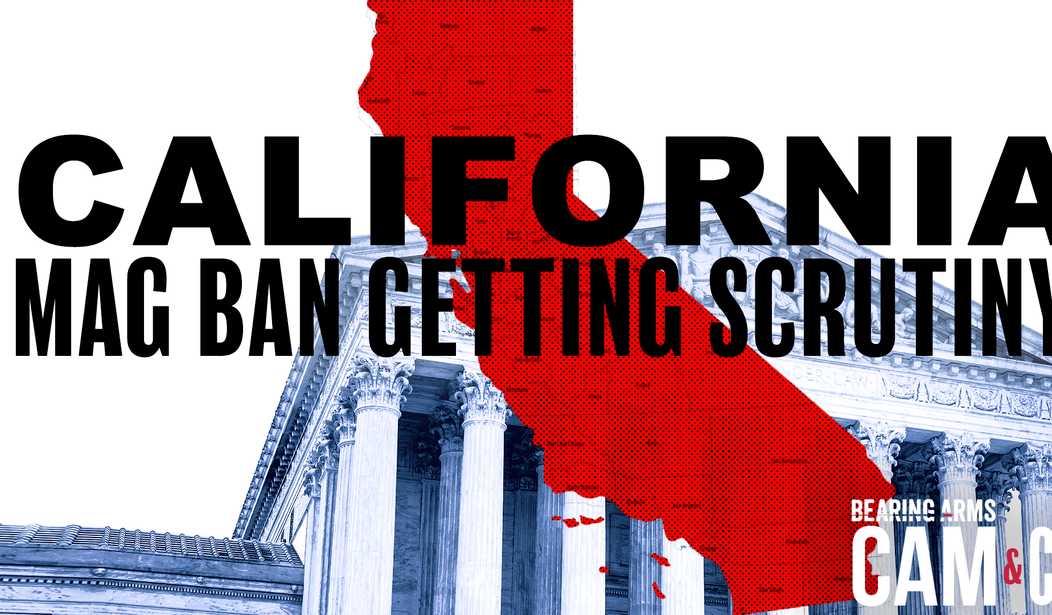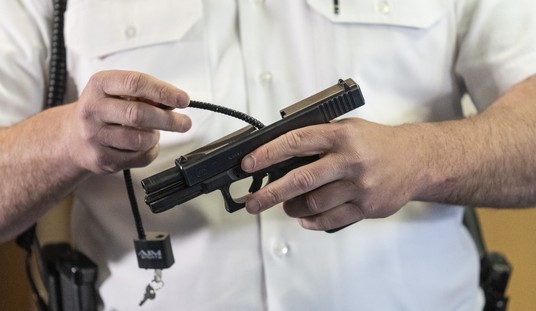Add a challenge to California’s ban on “high capacity” magazines to the growing list of litigation dealing with gun control laws that’s piling up before the Supreme Court. The NRA and the California Rifle & Pistol Association have filed a cert petition with SCOTUS asking them to hear the case, known as Duncan v. Bonta, which directly takes on the state law that not only bans the buying and selling of magazines that can hold more than ten rounds, but retroactively banned the possession of them as well.
On today’s Bearing Arms’ Cam & Co we’re taking a closer look at the petition and the arguments it raises, starting with the three questions presented by the plaintiffs to the Court:
1. Whether a blanket, retrospective, and confiscatory law prohibiting ordinary law-abiding citizens from possessing magazines in common use violates the Second Amendment.
2. Whether a law dispossessing citizens without compensation of property that was lawfully acquired and long possessed without incident violates the Takings Clause.
3. Whether the “two-step” approach that the Ninth Circuit and other lower courts apply to Second Amendment challenges is consistent with the Constitution and this Court’s precedent.
The last question will hopefully be answered by the Supreme Court’s pending decision in NYSRPA v. Bruen, but Duncan v. Bonta would be a great vehicle for the Court to weigh in on the constitutionality of bans of guns and arms that are in common use, as well as the more specific Takings Clause issue raised by the California mag ban, which requires gun owners to either permanently modify their mags to a 10-round limit, turn them in to law enforcement, or take them out of the state.
The first question shouldn’t be a difficult one for the Court to address. As plaintiff’s attorney Paul Clement argues in his brief, the Supreme Court’s guidance in Heller, McDonald, and Caetano has been clear and consistent: arms that are in common use for a variety of lawful purposes are protected by the Second Amendment.
The Ninth Circuit held that these utterly commonplace and constitutionally protected magazines not only can be banned prospectively, but can be confiscated, without running afoul of the Second Amendment. But the state may not prohibit what the Constitution protects. And it certainly may not do so retrospectively by confiscating lawfully acquired and constitutionally protected property that has been safely possessed for decades. That the decision below upheld such a law is proof positive of the pressing need for the Court’s intervention.
As for the mag ban and the Takings Clause, Clement’s brief makes the case that the Ninth Circuit employed some tortured logic about why it doesn’t apply, and erred in doing so.
The en banc court dismissed petitioners’ takings claim only by embracing positions that are at profound odds with this Court’s precedents. The panel held that California’s ban effects no physical taking because the law allows property owners to “modify or sell” their property, rather than surrender it. But the panel missed the forest for the trees: None of those so-called “options” provides a viable way for ordinary, law-abiding citizens to keep their constitutionally protected property. There can be no question that three of the means of compliance— surrendering the magazine to law enforcement, transferring or selling it to someone else, or removing it from the state —require physical dispossession. The owner must literally hand the property over to a third party or “keep” it somewhere where it cannot actually be possessed.
… The Ninth Circuit’s effort to exempt firearms from the scope of the Takings Clause is both wrong and upside down. It is bad enough to hold that the state may flatly prohibit citizens from possessing what the Constitution protects. To hold that the state may freely confiscate what the Constitution protects without even providing just compensation adds constitutional insult to constitutional injury. Even if that result could somehow be reconciled with the Second Amendment, there is no Second Amendment exception to the Takings Clause.
Now, the odds of the Court taking any particular case are always slim, and given the fact that we have nearly a half-dozen challenges that could be granted cert by the justices, I don’t want to get overly optimistic about Duncan v. Bonta‘s potential. Still, the constitutionality of magazine bans is an open question, and given the fact that the Ninth Circuit is 50-for-50 in upholding gun control laws since the Heller decision was handed down in 2008, it’s long past time for SCOTUS to step up and smack down the unserious reasoning that has been used to keep some truly terrible and unconstitutional laws on the books.
California’s reply brief is due April 1st, so we’ve got few weeks before the Court will officially consider the case in conference, and it could be even longer before we learn what, if anything, justices plan to do with Duncan. Fingers crossed that there are at least four members of the Court who sees the Ninth Circuit’s en banc decision for what it is; a flagrant violation of the Court’s own precedents, and one that cannot be allowed to stand.









Join the conversation as a VIP Member